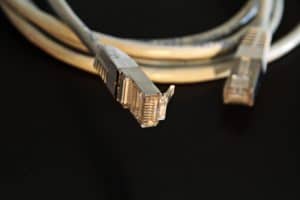As wireless networking becomes increasingly common, it’s no surprise businesses are looking for ways to use this technology outside of traditional office spaces.
 Whether you’re looking to provide wireless access throughout your parking lot, in the heat of your manufacturing floor, or any other location that is not climate-controlled, you need something more robust than a traditional access point.
Whether you’re looking to provide wireless access throughout your parking lot, in the heat of your manufacturing floor, or any other location that is not climate-controlled, you need something more robust than a traditional access point.
The KR Group has helped businesses creatively deploy access points in a variety of spaces.
We’ve found the one constant for outdoor or rugged deployment is the need to ensure the hardware can withstand the elements it’ll face.
Terms You Should Know
Before you start reading about what features you need to consider when looking for the right kind of access point for your deployment, let’s review two terms you’ll repeatedly see in this article:
- Outdoor access point: This refers to devices rated for outdoor temperatures (both high and low). This hardware can withstand hail, wind, and rain without impacting the access point’s performance.
- Ruggedized access point: These have many similar features, but they can handle even more extreme conditions. Think of a sub-zero freezer or next to manufacturing equipment.
These ratings look similar, but it’s essential to know that they are not identical. Specifically, outdoor-rated access points may not be suitable for rugged environments.
Important Access Point Features to Consider
When creating a strategy for your wireless network, you’ll want to spend time ensuring everything will work together how you intend it to.
Here are some steps you can take to create a robust, seamless network:
Step 1: Determine the device’s best location

With any wireless deployment, proper placement of access points is crucial to the success of your network.
The same is true for an outdoor or rugged environment, except there are additional factors you should consider.
If you’re planning for outdoor deployment, ensure the devices are outdoor-rated and specific to your needs.
Questions you may want to consider are:
- What is the temperature range for the devices you’re considering, and are they appropriate for the temperature at the mounting location?
- Are there any special accommodations you’ll need to make, such as proximity to flammable chemicals, ability to keep rodents out, etc.?
Step 2: Know what mounting hardware you need
 Once you’ve determined where you’re going to deploy this set of access points, you’ll also want to consider how you’re going to mount them.
Once you’ve determined where you’re going to deploy this set of access points, you’ll also want to consider how you’re going to mount them.
Outside, a common place to mount access points is on top of lighting poles. However, that means you have to think about weather possibilities, including lightning, so you’ll want to check the manufacturer’s notes to see if the hardware is built for power surges.
Additionally, you’ll want to ensure the access point comes with the appropriate mounting gear, or you can purchase equipment to mount it how and where you want it.
Step 3: Check the antennae’s features
Along with the actual access point, you need to ensure any external antennae you deploy can withstand the environment.
Most access point antennae are intended for indoor or outdoor use, and some manufacturers also offer rugged options.
You’ll want to research (or work with an IT consultant) to ensure the antennae meet your wireless needs and will withstand the environment you place them in.
Step 4: Consider an alternative indoor deployment
Outdoor and rugged antennas are more expensive than their indoor counterparts. 
Suppose the cost is prohibiting you from extending wireless outside or to a specific area of your business. Then, an alternative is to deploy rugged or outdoor antennae with an indoor access point.
You’ll need to run a cable from the antenna to the access point, so consider the distance and if it will affect the signal strength.
For example, running 10 feet of cable from an access point to antennae generally doesn’t affect connectivity. However, as that cable reaches 30 or 50 feet, it is a factor you should consider.
Step 5: Ensure manufacturer compatibility
When appropriately planned, outdoor and rugged access points can seamlessly extend your network to places where it was traditionally a challenge to provide coverage.
To create the best user experience, you’ll want to use the same manufacturer for rugged and outdoor access points as the rest of your wireless network.
By planning your access point deployment with only one manufacturer, all the devices are controlled by the same controller; the only difference is the hardware and location. This will reduce the likelihood of experiencing roaming issues.
Creating an Outdoor or Rugged Wireless Network for Your Business
Understanding your environment’s wireless needs when it comes to the physical features is only the first step to successfully extending or creating a network in unconventional places.
To recap, the above five steps will guide you to a better deployment that leaves you looking like a networking guru. These steps are:
- Know where your access points are going.
- Purchase the correct mounting hardware based on the location.
- Double-check any antennae are also rated for your rugged or outdoor deployment.
- Think about the possibility of deploying an indoor-rated access point with outdoor/rugged antennae, and see if it makes sense for your business.
- Use the same brand of access points throughout your network to reduce the possibility of roaming issues.
As you develop this strategy, check out our free Meraki Access Point Comparison Chart. It lays out your options for indoor and outdoor/rugged (they’re the same with Meraki), as well as other crucial features.


